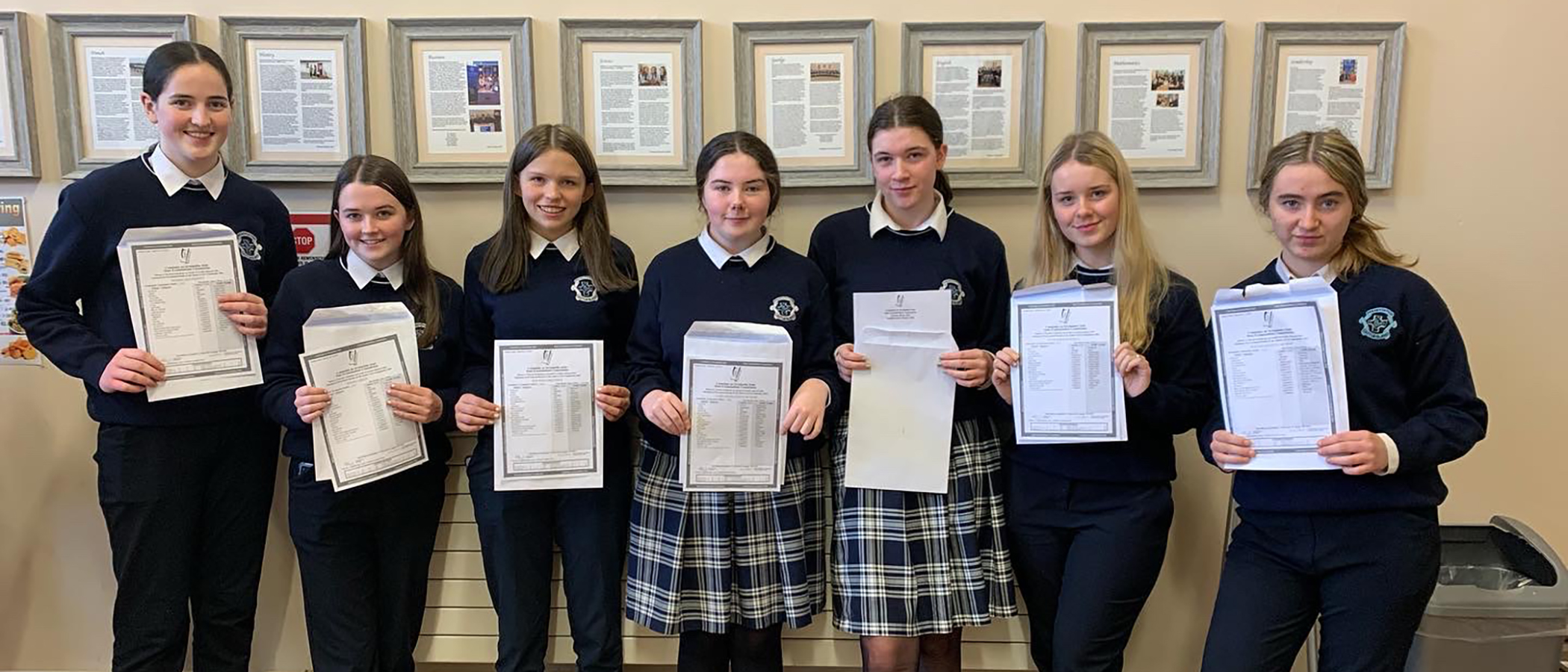
Presentation Secondary School Castleisland requires that all students wear the full and correct school uniform. When students wear the school uniform they are ambassadors for the school in the community. As such, they should take pride in their appearance and be aware of upholding the valued traditions which they represent. Wearing the school uniform helps to further enhance a sense of community, identity and also promotes respect for self and peers. The uniform also aligns with our vision statement of our school.
Full school uniform must also be worn by students on school outings or when representing the school or supporting school teams. The full and correct school uniform comprises of:
*Note* The school navy and white tartan skirt is required for official school events and outings and must be purchased by all students. A navy trousers as outlined above can alternatively be worn on a daily basis, if preferred.
The school crested jacket is the only jacket allowed to be worn by Junior Cycle students at any time. No other jacket is permitted.
The school crested jacket is the only jacket that can be worn on school grounds from 9am to 3.20pm/3.50pm by Senior Cycle students.
If a Senior Cycle student chooses to wear a non-uniform jacket to school, it must be
placed in one of the following three locations between 9am and 3.20pm/3.50pm:
Visiting International students can wear the school crested jacket or a plain navy jacket throughout the full school day. No other jackets are permitted.
The Year Head on behalf of the school community takes on the role of overseeing the welfare of a year group so that learning, at every level of the person, is supported. It generally involves:
• Welfare & wellbeing of the students in the year group
• Monitoring academic progress, attendance etc.
• Acting as a Link person for students and parents
• Pastoral care
• Explanation of school’s policies
• Promotion of school ethos
• Creating a sense of connection to the school community
• Promoting positive class spirit
• Affirmation of achievement
Different year groups have different needs and each year heads role varies accordingly. Examples of this include: Managing the transition from primary to secondary school, examinations, organising events etc.